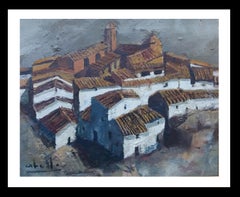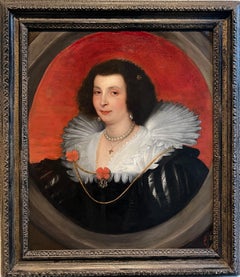Paintings
Late 20th Century Cubist Paintings
Wood, Oil
17th Century Old Masters Paintings
Canvas, Oil, Board
17th Century Old Masters Paintings
Oil
18th Century Old Masters Paintings
Oil
19th Century Old Masters Paintings
Oil
18th Century Old Masters Paintings
Canvas, Oil
1720s Old Masters Paintings
Copper
1790s Old Masters Paintings
Oil
1670s Old Masters Paintings
Oil
1930s Cubist Paintings
Oil, Board
Mid-19th Century Old Masters Paintings
Canvas, Oil
17th Century Old Masters Paintings
Oil, Canvas
Early 18th Century Old Masters Paintings
Canvas, Oil
18th Century Old Masters Paintings
Oil
Mid-20th Century Cubist Paintings
Canvas, Oil
Mid-20th Century Cubist Paintings
Canvas, Oil
Early 19th Century Old Masters Paintings
Oil
1730s Old Masters Paintings
Oil
1920s Cubist Paintings
Canvas, Oil
Mid-18th Century Old Masters Paintings
Canvas, Oil
1730s Old Masters Paintings
Oil
2010s Cubist Paintings
Oil
2010s Old Masters Paintings
Oil
1960s Cubist Paintings
Oil, Linen
1790s Old Masters Paintings
Oil
1960s Cubist Paintings
Oil
17th Century Old Masters Paintings
Oil
16th Century Old Masters Paintings
Ink, Gouache, Pen
Mid-19th Century Old Masters Paintings
Paper, Watercolor
1680s Old Masters Paintings
Oil
2010s Cubist Paintings
Oil
18th Century Old Masters Paintings
Canvas, Oil
2010s Cubist Paintings
Oil
Late 20th Century Cubist Paintings
Canvas, Oil
17th Century Old Masters Paintings
Oil
18th Century Old Masters Paintings
Canvas, Oil
1970s Cubist Paintings
Board, Oil
17th Century Old Masters Paintings
Oil
18th Century Old Masters Paintings
Oil
Early 18th Century Old Masters Paintings
Oil, Canvas
18th Century Old Masters Paintings
Canvas, Oil
Late 19th Century Old Masters Paintings
Oil
1970s Cubist Paintings
Board, Oil
18th Century Old Masters Paintings
Watercolor, Ink, Archival Paper
Late 20th Century Cubist Paintings
Wood, Oil
2010s Synthetic Cubist Paintings
Acrylic
19th Century Old Masters Paintings
Oil
Late 17th Century Old Masters Paintings
Oil, Canvas
Late 19th Century Old Masters Paintings
Canvas, Oil
Late 17th Century Old Masters Paintings
Canvas, Oil
1940s Cubist Paintings
Canvas, Oil
Early 19th Century Old Masters Paintings
Oil, Canvas
Late 20th Century Old Masters Paintings
Oil
1960s Cubist Paintings
Canvas, Oil
17th Century Old Masters Paintings
Oil
18th Century Old Masters Paintings
Oil
Late 20th Century Old Masters Paintings
Oil
1970s Cubist Paintings
Oil, Board
Shop Abstract, Landscape, Figurative and Still-Life Paintings
Painting is an art form that has spanned innumerable cultures, with artists using the medium to tell stories, explore and communicate ideas and express themselves. To bring abstract, landscape and still-life paintings into your home is to celebrate and share in the long tradition of this discipline.
When we look at paintings, particularly those that originated in the past, we learn about history, other cultures and countries of the world. Like every other work of art, paintings — whether they are contemporary creations or works that were made during the 19th century — can often help us clearly see and understand the world around us in a meaningful and interesting way.
Cave walls were the canvases for what were arguably the world’s first landscape paintings, which depict natural scenery through art. Portrait paintings and drawings, which, along with sculpture, were how someone’s appearance was recorded prior to the advent of photography, are at least as old as Ancient Egypt. In the Netherlands, landscapes were a major theme for painters as early as the 1500s. Later, artists in Greece, Rome and elsewhere created vast wall paintings to decorate stately homes, churches and tombs. Today, creating a wall of art is a wonderful way to enhance your space, showcase beautiful pieces and tie an interior design together.
No matter your preference, whether you favor Post-Impressionist paintings, animal paintings, Surrealism, Pop art or another movement or specific period, arranging art on a blank wall allows you to evoke emotions in a room while also showing off your tastes and interests. A symmetrical wall arrangement may comprise a grid of four to six pieces or, for an odd number of works, a horizontal row. Asymmetrical arrangements, which may be small clusters of art or large, salon-style gallery walls, have a more collected and eclectic feel. Download the 1stDibs app, which includes a handy “View on Wall” feature that allows you to see how a particular artwork will look on a particular wall, and read about how to arrange wall art. And if you’re searching for the perfect palette for your interior design project, what better place to turn than to the art world’s masters of color?
On 1stDibs, you’ll find an expansive collection of paintings and other fine art for your home or office. Browse abstract paintings, portrait paintings, paintings by popular artists and more today.




